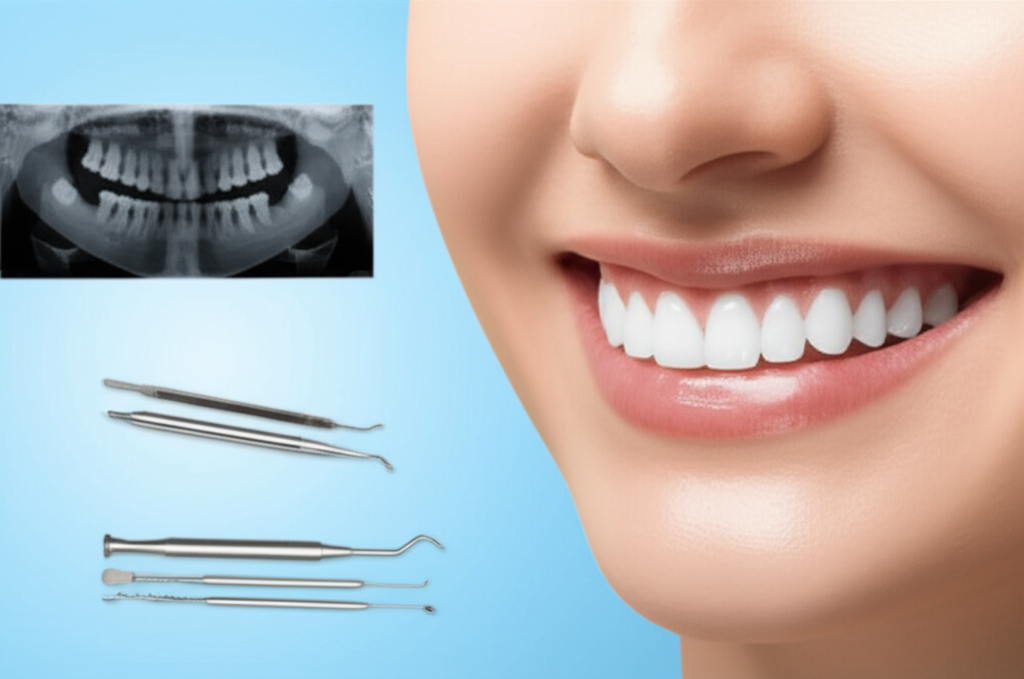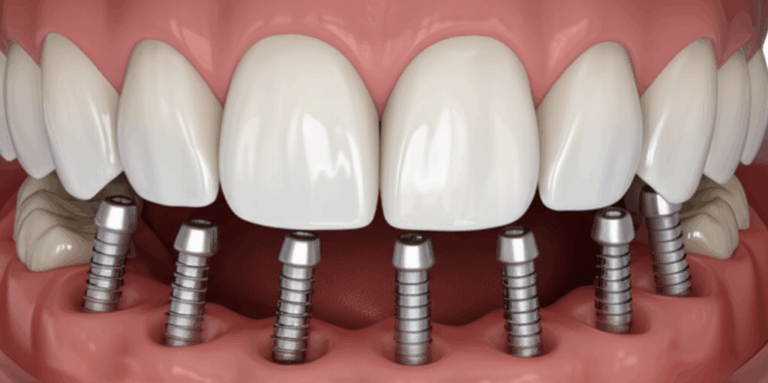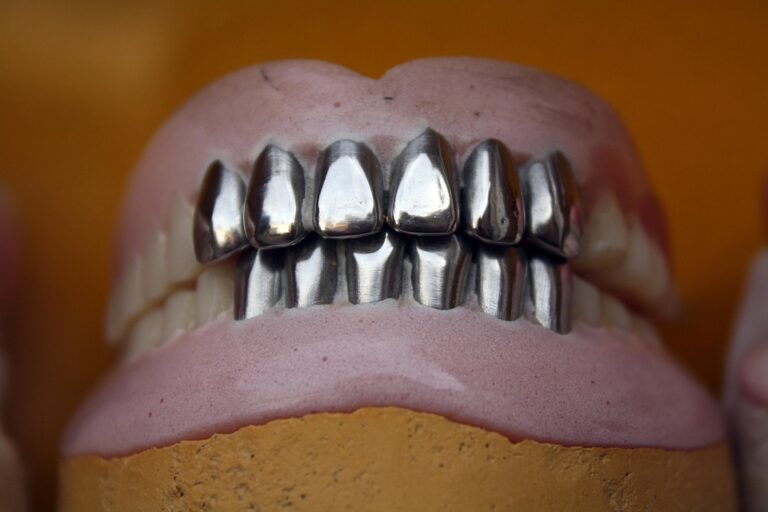
How Long Does It Take to Get All-on-4 Dental Implants? Your Complete Timeline
That question—“How long does it take to get All-on-4 dental implants?”—isn’t just about numbers. It’s really about your free time, your daily habits, and your hope to feel good about your smile again. If you or a loved one is thinking about getting all-new teeth with implants, it’s normal to ask how it all works. You want more info, straight answers, and to know just what’s ahead.
Let’s walk through all the steps together, from that first nervous visit, all the way to taking a big bite with your new teeth.
In This Article: What We’ll Cover
- Introduction: Understanding the All-on-4 Timeline
- Phase 1: Initial Consultation & Planning (1–3 weeks)
- Phase 2: The Surgical Procedure (“Teeth-in-a-Day”)
- Phase 3: Healing and Osseointegration (3–6 months)
- Phase 4: Final Prosthesis Fabrication & Placement (2–4 weeks)
- Factors That Can Influence Your All-on-4 Timeline
- All-on-4 vs. Traditional Implants: A Timeline Comparison
- Long-Term Maintenance and Longevity
- Conclusion: Investing in a Timely, Lasting Smile
Introduction: Understanding the All-on-4 Timeline
So, what are All-on-4 implants? Simply put, All-on-4 dental implants help you get all your teeth back on either your top or bottom jaw using just four dental implants. These four anchors hold up a whole row of fake teeth—so you don’t need one implant for every missing tooth.
A lot of people hear “Teeth in a Day” and think their new, permanent teeth just appear right away. The truth? All-on-4 is done in stages. Yes, you often leave surgery with strong, good-looking temporary teeth (so you’re not left toothless). But your final, custom teeth come a few months later, after your mouth has healed.
Knowing how long this takes helps you plan ahead and make the most out of your new smile.
Phase 1: Initial Consultation & Planning (1–3 Weeks)
X-rays and Checking Your Mouth
Your All-on-4 story starts with the dentist getting a close look at what’s going on.
- X-rays, CT scans, and mouth impressions help see your jawbone, your teeth, and any other mouth problems.
- The dentist will check how strong your jawbone is, how much space there is, and look for extra problems.
- Sometimes, these scans show you might need extra steps—like pulling a tooth or a small bone graft to get the spot ready.
Making a Plan
Everyone’s mouth is different, so your plan will fit you. Here’s what happens:
- Your dentist tells you about choices for different materials—like acrylic, zirconia, titanium—so you can pick what works best.
- You’ll hear about the main parts of treatment, possible healing times, and when you’ll come in for visits.
- Someone at the office goes over the costs and helps with your payment options.
Getting Ready (If Needed)
You might need to get your mouth ready before the main day. That could mean:
- Pulling teeth that need to go (this might also happen on the surgery day).
- Bone grafts—but these aren’t usually needed with All-on-4, except if your bone is really thin.
How long does this first part take? Usually one to three weeks, depending on what you need and how soon you can get in.
Phase 2: The Surgical Procedure (“Teeth-in-a-Day”) (1 Day)
This is where things really happen. The idea of “Teeth in a Day” isn’t just a name—All-on-4 makes it happen.
Putting in the Implants
On your main surgery day:
- The dentist takes out any teeth that need removing (if it hasn’t already happened).
- Gets your gums and jawbone ready for the four (or sometimes more) metal implants per jaw.
- Uses special digital tools and guides to put each implant in the perfect spot—often with help from a skilled digital dental lab.
- Implants are set in a way that lets them hold your temporary teeth right away.
FYI: The whole thing can take 3–6 hours, depending if you do one jaw or both, and if there are lots of extras needed.
Getting Your Temporary Teeth Fitted Right Away
Here’s the best part: Before you even go home, your new implants hold a temporary set of teeth. These teeth are built quick (often by a smart 3d dental lab) and click right in place.
What does that mean for you?
- You walk out the same day with a full smile.
- These temporary teeth let you talk, smile, and eat (careful with soft foods) right away.
But remember—these are just for now. Your implants still need to heal and bond with your jawbone for your real, final teeth later.
Key takeaway: With All-on-4, you leave the office with teeth you can use.
Phase 3: Healing and Osseointegration (3–6 Months)
Letting Your Jawbone Heal and Attach
Now it’s your body’s turn to do the work.
- Osseointegration, or your bone growing onto the implants, is super important for them to last a long time. Think of it like concrete setting around posts in the ground.
- Most people need three to six months for this step, but it depends on your bone, health, and how well you follow the dentist’s advice.
Looking After Your Temporary Teeth
In this part, you need to:
- Eat soft foods only for six to eight weeks (eggs, yogurt, pasta, cooked veggies) so you don’t hurt your new implants.
- Gently clean your mouth to stop any infection. Salt water rinses, soft brushes, no sticky foods.
- Avoid smoking or drinking alcohol. They can mess up your healing, and maybe even make you lose your implants.
Check-Ups and Adjustments
Don’t worry—you’ll see your dentist for follow-ups (like at two weeks, six weeks, then every few months) to see how you’re healing, fix your temporary teeth if needed, and help with any pain or problems.
- You can usually go back to normal life (work, friends) in about 3–7 days, but hard exercise should wait a little longer.
Note: This part takes the longest, but you always have teeth during it.
Phase 4: Final Prosthesis Fabrication & Placement (2–4 Weeks)
Getting Impressions for Your Real Teeth
Once your jawbone is locked onto the implants, it’s time to order your forever smile. The dentist takes new impressions to make sure your final teeth fit perfectly.
Making Your Custom Bridge
- Skilled dental workers (like in a zirconia lab) take those impressions and design teeth that look and work just like real ones.
- You get to pick between things like acrylic/titanium (cheaper and lighter) or zirconia/ceramic (strong and looks just like real teeth).
- Making this final set usually takes around two to four weeks.
Putting in the Final Teeth
It’s the big day! Your temp teeth come off, and the new, custom ones go on. The dentist checks everything—how you bite, how it feels, how it looks.
- You’ll get small tweaks to make sure everything feels good and works for chewing and cleaning.
Key takeaway: This is when active treatment is done, and you start just enjoying your new smile.
Factors That Can Influence Your All-on-4 Timeline
No two people’s journeys are the same. A few things can speed things up—or slow them down.
Your Health and Jawbone
- If you’re healthy and your bone is solid, things go faster.
- If you have health issues (like diabetes), weak bone, or gum problems, you might need a little extra time.
Extra Steps Needed
- Sometimes you’ll need teeth pulled, bone smoothed, or gum work before starting.
- Regular All-on-4 is made to work with weaker jaws, so big bone grafts are rare. But if you need it, that adds time.
Doing What Your Dentist Says
- Healing goes better if you stick to soft food, keep things clean, and come to check-ups.
- If you don’t listen or try to eat hard food too soon, you risk messing up your implants.
Which Materials You Pick
- Material choices (acrylic, titanium, zirconia) can change how long it takes for the lab to make your final teeth.
Dental Lab Speed
- A good lab makes a big difference. Some clinics have their own labs to speed things up, others use trusted partners. Sometimes it takes an extra week or two.
All-on-4 vs. Traditional Implants: A Timeline Comparison
Here’s where All-on-4 is really helpful. In a head-to-head, check this out:
All-on-4 (Full Set Implants)
- Four to six implants hold a full row of teeth (top or bottom).
- Implants go in at angles so you don’t need lots of grafting.
- You get temporary teeth to use right away.
- Usually done in four to seven months from first visit to last.
Traditional Implants
- Need eight to ten (or more) implants for a full jaw.
- Lots of bone loss? You’ll wait through big bone grafts—sometimes six months or more.
- Get real teeth only after months of healing—making nine to eighteen months or more.
- More downtime between steps and there might be times with nothing fixed in your mouth.
In Short
All-on-4 is normally faster, easier, and simpler for most people who need a full new set of teeth.
Long-Term Maintenance and Longevity
Once your permanent teeth are in, is that it? Not quite. Here’s how you keep your smile looking great for years:
Regular Dentist Visits
Plan on seeing your dentist about twice a year. They’ll:
- Check your bridge and the little posts holding your teeth.
- Look for sore gums, infection, or any worn-out parts.
- Clean around and underneath your bridge using gentle, special tools.
Taking Care at Home
- Brush two times a day with a soft brush and gentle toothpaste.
- Clean under your bridge with floss, small brushes, or a dental water jet.
- Don’t bite hard foods or use your teeth to open stuff.
How Long Do They Last?
- Implant success rates: 90–98% at 10 years; 85–95% at 15 years (if you care for them well).
- Bridge life: Most last 10 years or more. Some last 15+ years, especially if you picked tough materials like zirconia.
- Biggest risks: Not cleaning well, ignoring check-ups, smoking.
Want more tips? Check out resources for teeth health and dental care advice to keep your smile strong.
Who Is a Good Candidate for All-on-4 Dental Implants?
All-on-4 works great for many, but not all. Good candidates:
- Have lost most or all teeth in a jaw, or need all teeth pulled out.
- Want a fixed (non-removable) solution—no more wobbly dentures.
- Have enough jawbone for angled implants (even folks told they “don’t have enough bone” for regular implants).
- Are eager to keep up with daily cleaning and check-ups.
You might not be ready (or able) for All-on-4 if you:
- Have uncontrolled diabetes, weak bones, or certain immune diseases.
- Smoke a lot and won’t quit (smoking makes implants risky).
- Can’t or won’t return for aftercare visits.
Not sure which group you fit in? The smartest next step: schedule a real talk with an implant dentist. You can also read more about mouth health and if implants are right for you in our teeth information article.
Your Healthy Takeaway: Key Points to Remember
Your All-on-4 cheat sheet:
- All-on-4 gives most people a working, nice smile the first day—but total time is about four to seven months (healing and customizing your real teeth takes up most of it).
- Four main steps:
- Consultation and planning (1–3 weeks)
- Surgery and temporary teeth (1 day)
- Healing and bone bonding (3–6 months)
- Making and fitting your final bridge (2–4 weeks)
- Most people go back to light life stuff within a few days of surgery.
- Your permanent teeth come after your jaw grabs onto your new implants.
- Your new teeth can last decades if you follow up with your dentist and brush well.
- Timing depends on your health, what teeth you pick, and how fast the lab works.
- All-on-4 is much quicker than regular full-mouth implants (which can take a year or more).
- The plan is just for you: your dentist will check your health, explain what fits your life and money best, and then guide you.
Conclusion: Investing in a Timely, Lasting Smile
Getting a strong, new smile isn’t an overnight thing. It happens in a few big steps, each one important. But here’s what to remember—the All-on-4 process changes lives fast, and more predictably than most other options.
You’ll leave the dentist able to smile and eat with new teeth the same day, and in just a few months, your custom-made, lasting teeth are ready. Care for them right and pop by the dentist, and you’ll enjoy that fresh, happy feeling every day, for years to come.
Still wondering how long your story will take? Ask a dental implant expert. They’ll answer your questions, plan your treatment, and help you get the new start you want as soon as possible.
Remember: you only get one smile—so make it strong, make it bright, and make it last.
Still Curious? Explore More
- Maintaining Teeth Health for Life
- All About Dental Care and Aesthetics
- The Science Behind Removable Dentures and Lab Technologies
Sources & Further Reading
- American Academy of Implant Dentistry. “Dental Implant Facts & Figures.”
- Malo P, Rangert B, Nobre M. “All-on-4 Immediate Function Concept with Branemark System Implants for Completely Edentulous Mandibles: A Retrospective Clinical Study.” Clin Implant Dent Relat Res.
- Journal of Oral Implantology, Clinical Guidelines for All-on-4 Full Arch Rehabilitation.
This article gives general info. Always check with your own dentist for advice on what’s best for you.








